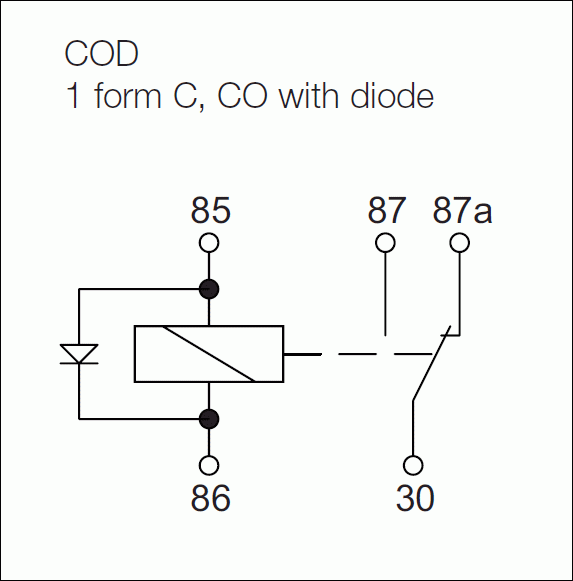Standard practice is that terminal "30" is 12 V supply and "87" is output. That is for "normally open" contacts, meaning "apply current to coil to actuate relay". Occasionally, one wants "normally closed" operation, in which case you use the "87a" terminal, but it is rarely wired if you look at a relay box in modern cars, and indeed some relays are missing the "87a" terminal (especially newer half-size type). It hardly matters if you reverse "30" and "87" but a subtle reason why you might want to reverse them. See
http://www.bcae1.com/relays.htm for much more info.
As 67Dart273 says, it can matter if you wire the coil backwards, not for the coil itself but for an internal "spark arresting diode", if present. Some relays suggest you provide such an external diode if not present. Sometimes, a diode is in the relay's base, or the clamp may instead be a resistor. See above link for photos.
Terminal numbers are a standard, DIN 72552 (
http://en.wikipedia.org/wiki/DIN_72552) originally German, now world-wide. It defines most common automobile connections with standard numbers, and helps a lot when reading the schematics for my 80's M-B cars or newer U.S. cars. Standard "Bosch" relay terminal numbers appear to conflict with DIN 72552, which lists supply on "87" and NO output on "87b" (no "30" exists for relays). Re coil terminals, "86" = "coil+" and "85" = "coil-" (usually directly grounded, though via NSS if a starter relay).
It seems we finally caught 67Dart273 in error. If you applied positive to "85" and grounded "86", the diode would bypass the coil so the relay wouldn't actuate and the diode would probably melt. The diode blocks flow from "86" (actuate) to "85" (ground) when the coil is "ON" and flows the other way when the coil switches off to dissipate "kick-back" voltage from inductor switch-off, which is how ignition coils work, but we don't want sparks in our relay.
You can always find conflicting info on the web. One site (
http://www.accessconnect.com/car_relays.htm) shows "85" as coil+ and "86" as coil-, with a diode going the other way (works for that wiring). I doubt one could find such a commercial relay, but the first link above has a photo of a relay base with diode installed reversed (from these audio bozo's?). Of course, for a resistor clamp the coil polarity doesn't matter.

















